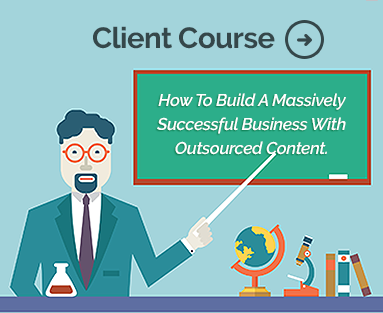Did you know that around 77% of people read blogs? Blog posts are one of the most effective and popular forms of digital content. Having an updated blog on your website is a great way to generate leads and establish your organization as an authority figure.
Posting blogs is a wonderful way to showcase your expertise and improve your writing skills. If you’re new to blog writing, it can be challenging and overwhelming.
This guide will discuss everything you need to know about how to write a blog post. We’ll share our pro tips for writing a blog post so you can become a master in no time.
What’s a Blog Post?
Before we dive into how to write a blog post, let’s go over what exactly a blog post is. A blog post is a news piece, guide, or article that’s published on your website’s blog. It’ll typically cover a topic that’s relevant to your organization and is informational for visitors to your website.
Blog posts range in length. They can be anywhere from 300 to even 5,000 words. Blog posts will also contain other types of media, such as:
- Videos
- Images
- Charts
- Infographics
Blog posts can drive traffic to your website, increasing your conversions.
Expert Guide to Writing a Blog Post
Now that we have a basic understanding of what a blog post is, let’s discuss how to write one. In addition to bringing more traffic to your website, blog posts can put additional money in your pocket.
Select a Topic
Finding ideas for a new blog post is one of the first steps to writing a blog post. One way to find topics is by doing keyword research. You can find keywords and search queries that internet users search for.
As you do keyword research, you’ll find topics that your target audience will care about. You can then evaluate how popular they are.
Before you get started, list around 10 keywords and terms that are related to your specific niche. Start searching for these terms and see what other blogs have been posted on the topic.
Research Post Ideas
Once you have some topic ideas together, pick your favorite one. You’ll next want to find a good format or idea that matches your topic.
Choosing the right format will help increase the likelihood of your site ranking high on the search engine results pages. Ranking high makes it easy for potential users to discover your blog.
Some examples of blog post types include:
- Step-by-step guide
- “What” post
- List-post
- Thought leadership post
- Comparison post
- Review post
- Curated post
Before you select what type of blog you want to write, you’ll want to identify what the search intent of your target audience is. Search intent reflects what your target audience is hoping to accomplish when they search for something.
The three types of search intent include:
- Navigational: Users looking for a specific webpage or website
- Informational: Users with a specific question
- Transactional: Users hoping to purchase a service or product
Draft a Captivating Title
For your blog to succeed, it needs a good headline. Your blog post title will be the first thing users see when they conduct a search.
As you get started writing your blog, create a temporary title that describes your topic. Use that as a starting point for writing your blog. As you finish your blog, you can tweak it as necessary.
Keep these tips in mind when drafting your headline:
- Avoid vague phrasing
- Use numbers
- Write multiple headlines
- Ask a question
- Include colons and hyphens
- Write longer headlines
Draft an Outline
Creating a basic structure of your blog post will help you write your blog more efficiently. You can keep your blogs on-point and focused.
In your outline, include the working title and main topic of your blog. You’ll also want to add the headings and sub-headings.
Some other tips for creating an outline include:
- Incorporate bullet points
- Include short descriptions
- Ensure your idea and supporting points are relevant
- Add in your research
Write Your Initial Draft
Once you’ve completed your outline, you can get started on your first draft. Your blog post should be comprised of three main parts:
- Introduction
- Body
- Conclusion
Your introduction will let your readers know what the post will be about, engaging them, so they continue reading. In the body, you’ll elaborate more on the topic. It’s important to keep your paragraphs short since readers tend to skim while reading.
Your conclusion should summarize the blog’s topic. It should also remind them how important the blog post is. The conclusion should close with a call-to-action, encouraging your readers to contact you or purchase one of your products.
The best type of blog post will also include links to other websites, including yours, in the text. Linking phrases to your internal web pages will encourage readers to check out other aspects of your websites.
Copy Edit Your Work
You should read through your blog draft multiple times to ensure it’s error-free. In addition to checking for typos and grammatical mistakes, you’ll want to ensure that it’s concise and clear. Taking the time before you post to review your work will save you from having to update the blog after it’s live.
Publish Your Blog
Once your blog has been reviewed and is free of mistakes, it’s time to publish it. When the article has been published on your website, you’ll want to promote it.
You can share your blog post on various social media sites, such as Pinterest, Facebook, or Instagram. You can interact with users who comment on your posts, improving your engagement rates.
Another way to promote your blog is by building a mailing list. When you post a new blog, you can let your subscribers know through a weekly or monthly newsletter.
Discover How to Write a Blog Post
It can take years to master how to write a blog post. At iWriter, we have a team of blog writers with experience in a variety of niches. Increase your website’s traffic and conversions with our expert writers.
View our pricing guide to learn more about our content drafting services.




Comments are closed.